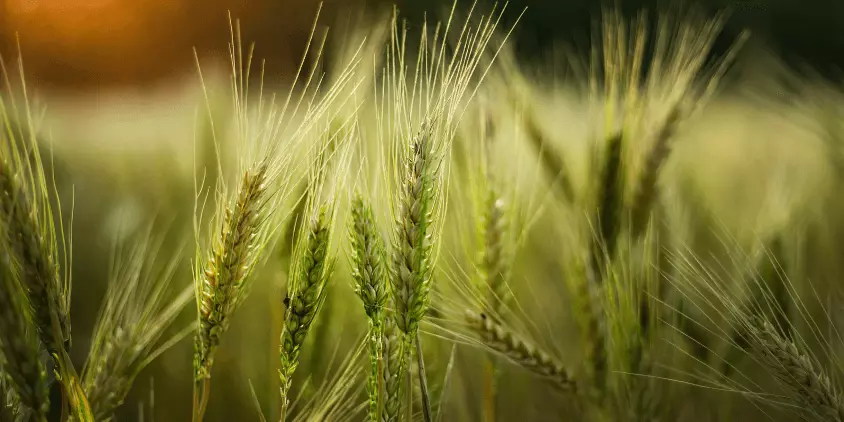
Growing Barley: Proper Crop Support For Yield Increase
Barley is one of the earliest cultivated and in-demand crops, and this plant is relatively easy to grow. This is why growing barley seems to be a promising business, provided the plants’ needs are met with adequate care. By knowing the soil type, climatic conditions, and nutrient requirements to grow barley, farmers can produce high-quality yields.
The newest agricultural technologies and online farming platforms facilitate the field management task. Let’s consider growing conditions for barley and proper care throughout the season with advanced crop monitoring tools.
Conditions For Barley Growth
Barley (lat. Hordeum vulgare) belongs to edible annual grain grasses with a ten-thousand-year history. Barley farming is a popular business in countries with temperate climatic conditions, and it was one of the first cereals grown in Eurasia.
Depending on the season of growing, there are winter and spring varieties that can be used both as cash or cover crops. The plant cultivation is quite similar to growing wheat.
By including these plants in a crop rotation sequence, farmers can essentially improve soil health and optimize their weed, pest, and plant disease management programs, which is easier to plan and implement with EOSDA Crop Monitoring’s Crop Rotation feature.
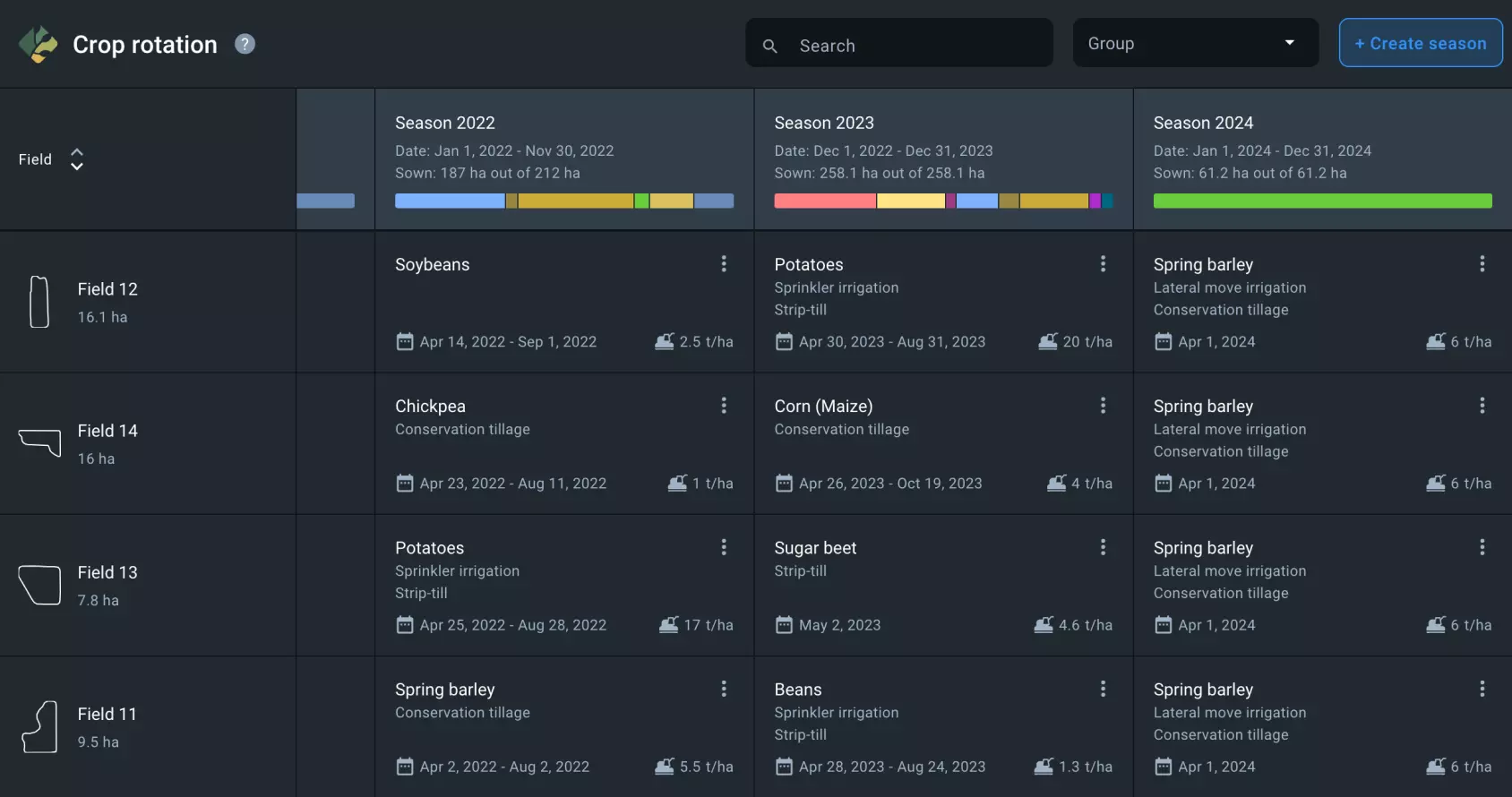
When And Where Is Barley Grown
Since this crop is typically produced in temperate climates, the growing zones for barley scale from 3 to 8 according to the USDA. The northern and western parts of the country are the main barley-growing U.S. regions. Idaho, Montana, North Dakota, and Washington rank top crop-producing states.
The plants develop best at the temperature of 55°F (13°C), yet growing conditions for barley may vary from cultivar to cultivar.
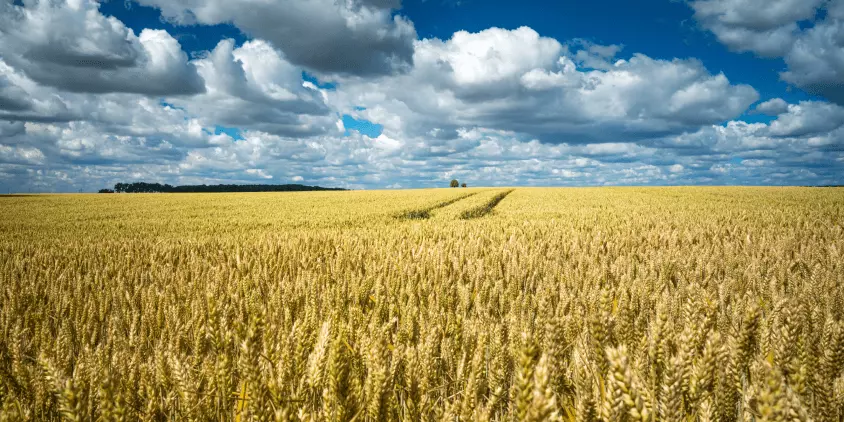
Humidity And Water Requirements To Grow Barley
The crop’s production will be the most successful when the weather is cool and dry. The plant can also grow in hot areas provided the humidity is low. Hot but humid climatic conditions put the yields at risk due to a higher plants’ vulnerability to plant diseases. This is why this plant is not common in the humid southeastern part of the United States.
Keeping the seeds moist will promote their germination. As the seedlings grow, the soil should be slightly moist, not soaking wet. With further development, plant water needs will depend on the weather conditions. Thus, irrigation rates will be higher when the weather is warm, and they should be reduced as the temperature drops. Mind that the proper climate to grow barley is cool and dry.
Scheduling irrigation events is easier with EOSDA Crop Monitoring. The NDMI index and the Soil Moisture feature on the platform will help you assess the stand’s water needs and adjust your irrigation plan correspondingly.
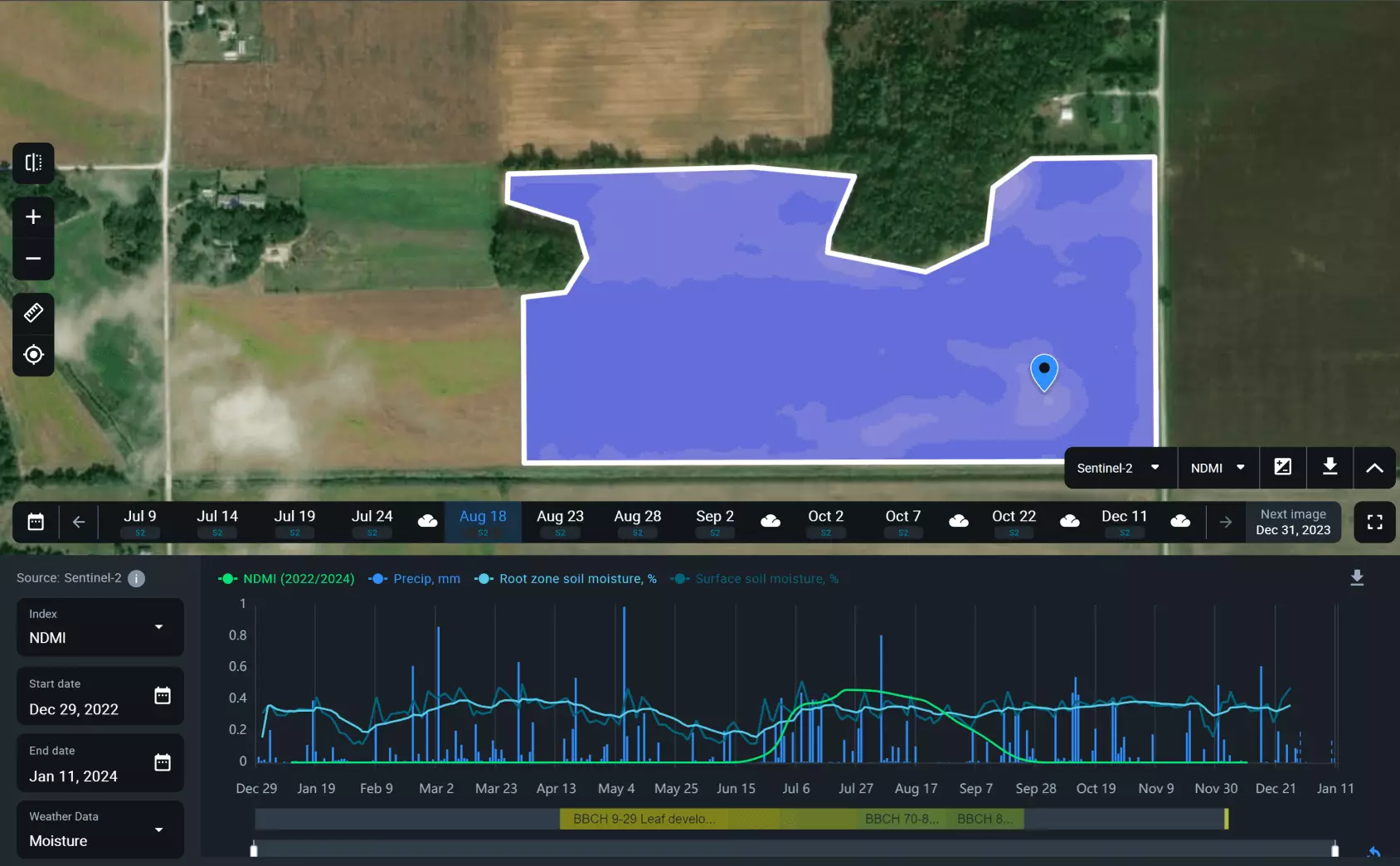
Any irrigation type is suitable while growing these plants, yet most farmers prefer to use sprinklers. Despite it may seem the easiest option, the risk of spreading fungal diseases in this case is higher.
Type Of Soil Needed To Grow Barley
The crop won’t grow in the fields with poor draining properties. The best soil types are clay loams and loams provided they are sufficiently drained. Sandy soils are not suitable for this crop since the stands won’t be uniform on such fields.
Because these plants are quite salt-tolerant and can stabilize saline soils, they can be helpful in soil degradation control. Furthermore, the crop can be used to combat soil erosion and boost soil fertility by improving its tilt.
For proper seed germination, the soil temperature for planting barley should be at least 40°F (4-5°C). Soil pH requirements range from 6.0 – 6.5 (sometimes 8.5), and these plants can survive better in highly alkaline soils, compared to other small grain crops .
Barley Growing Requirements For Temperature And Sunlight
The plants need at least 6 hours of sunshine for adequate development, best provided in zones 3-8 (USDA). Even though the optimal growing temperature for barley is considered to be 55°F (13°C), it can be individual for each variety, so it is possible to find a suitable option for a specific region. However, frosty winters are dangerous for the plants, and temperatures below 17°F (-8°C) will kill the stands. The yields should be harvested before the first frost.
Still, crop production can also be feasible in warmer regions (zone 8 and hotter). In these areas, the planting should be shifted to early spring or fall.
Ideally, the barley range of temperature for growth is 25°F to 70°F (-4°C to +21°C).
With the Weather Forecast feature on EOSDA Crop Monitoring, you will be aware of the exact meteorological conditions in your fields. Besides, our users get timely alerts about the risks of cold/heat stress, extreme rainfall, or strong winds enabling them to protect their stands properly.
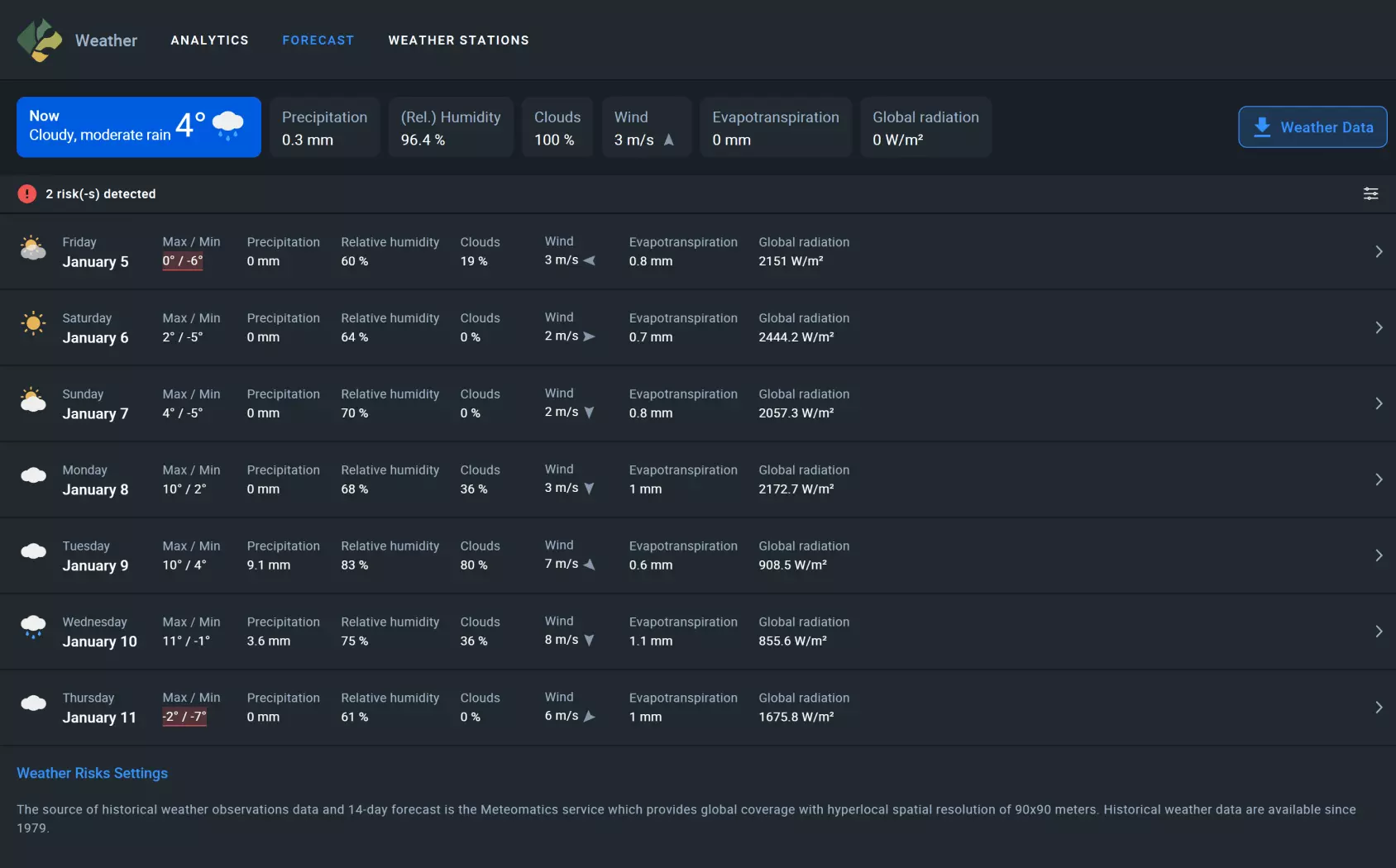
Spring and winter varieties have different temperature regimes for adequate heading. Thus, growing winter barley suggests the seedlings’ exposure to cold temperatures during winter months (aka vernalization). Growing spring cultivars doesn’t require it.
How To Plant Barley
It is recommended to plant the crop at a depth with available moisture and close contact with the soil. Thus, the planting depth for barley must not exceed 2.5 inches (6.3 cm) and is usually between 1 – 1.5 inches (2.5 – 4 cm). It is preferable to plant the seeds at the same depth throughout the whole field to have a uniform stand.
When to plant barley? Because the plants suffer from the heat at the stage of flowering, the barley growing season in spring starts as early as possible. By planting spring barley early, farmers will get stronger seedlings that will be able to resist pests that return from the southern areas when it gets warmer.
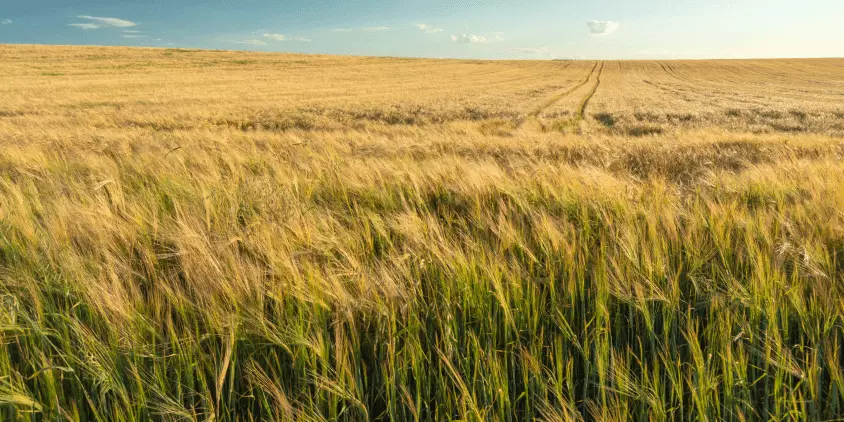
EOSDA Crop Monitoring
Performing fields analytics based on relevant satellite data to ensure effective decision-making!
Barley Sowing And Optimization Of Seeding Rates
Because the highest yields can be expected from growing the stands in cool weather, the sowing time for barley depends on the climatic peculiarities of the region. Sowing winter barley is typical for mid-winter climates. In the areas with frosty winters, the crop is sown in early spring. Barley sowed in spring typically ripens later than its winter varieties.
There are two options to sow barley: either uniformly or with variable rates. The latter option proves to be more cost-effective and, thus, it is more preferable. Variable rate seeding allows for differentiating the amounts of seeds and their distribution. Variable seeding rates are calculated according to the specifics of the soil and weather conditions in the field.
The application of the variable rate technology for barley sowing becomes handy with productivity maps on EOSDA Crop Monitoring that reveal the zones with higher or lower productivity, based on the average statistics of vegetation development in the previous seasons.
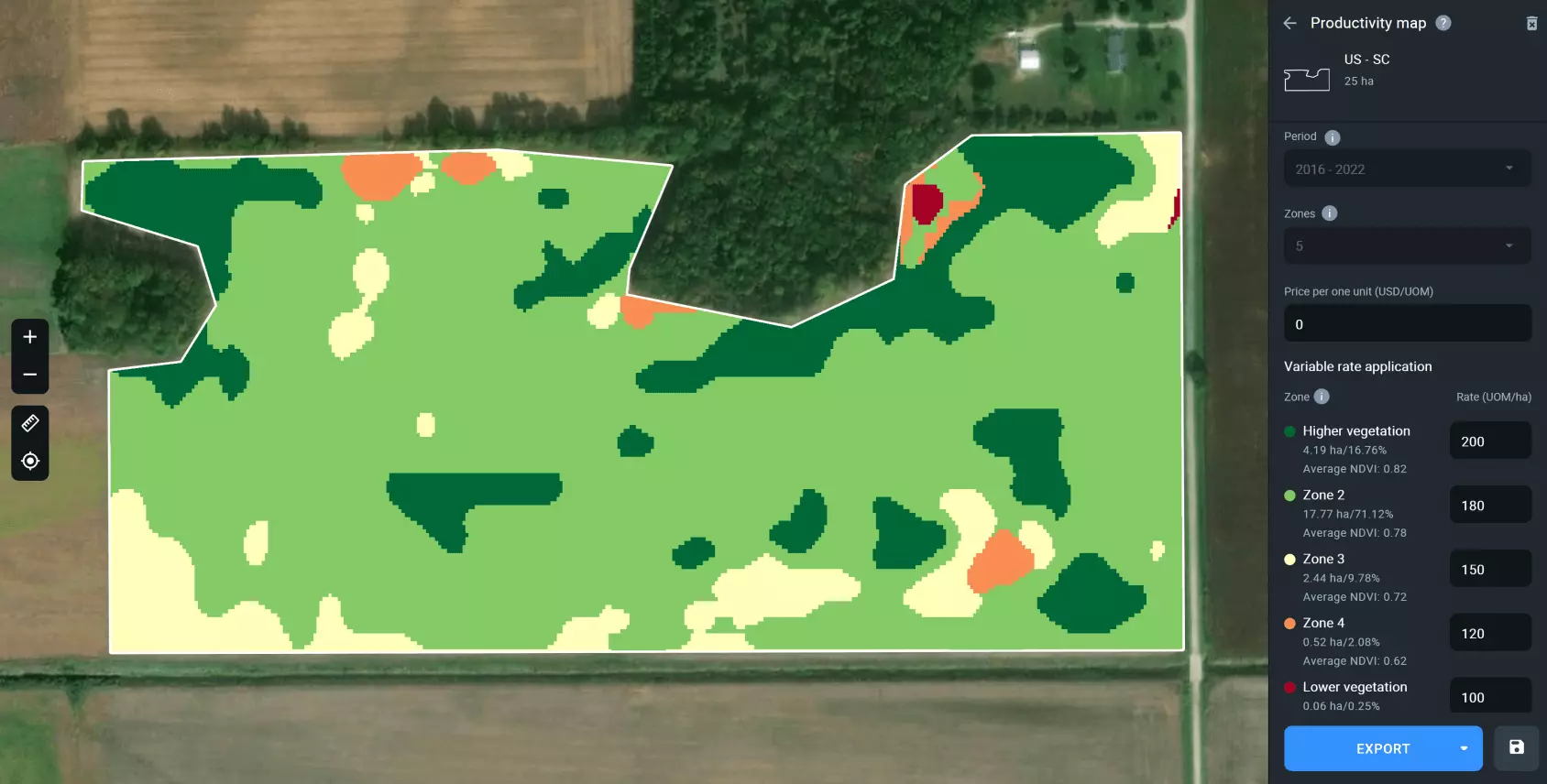
How To Grow Barley: Throughout-The-Season Care
Plant management primarily depends on the purpose of growing. If the plants are used as a cover crop they should be cut at the appropriate time. When used for grazing, mature plants are not suitable due to the risk of livestock injuries with seedhead spikes. If the crop is grown for hay, it is good before the early booting stage. The dough stage is the time for cutting the crop for silage.
As for water requirements to grow barley, it needs sufficient irrigation in the arid regions at the booting stage and after grazing. The plants grown as fodder need more nutrients than the stands to produce grain.
Understanding plant needs throughout the season is easier for the EOSDA Crop Monitoring users. The NDVI index on the platform helps to control the growing process and timely respond to any possible issues in the field.
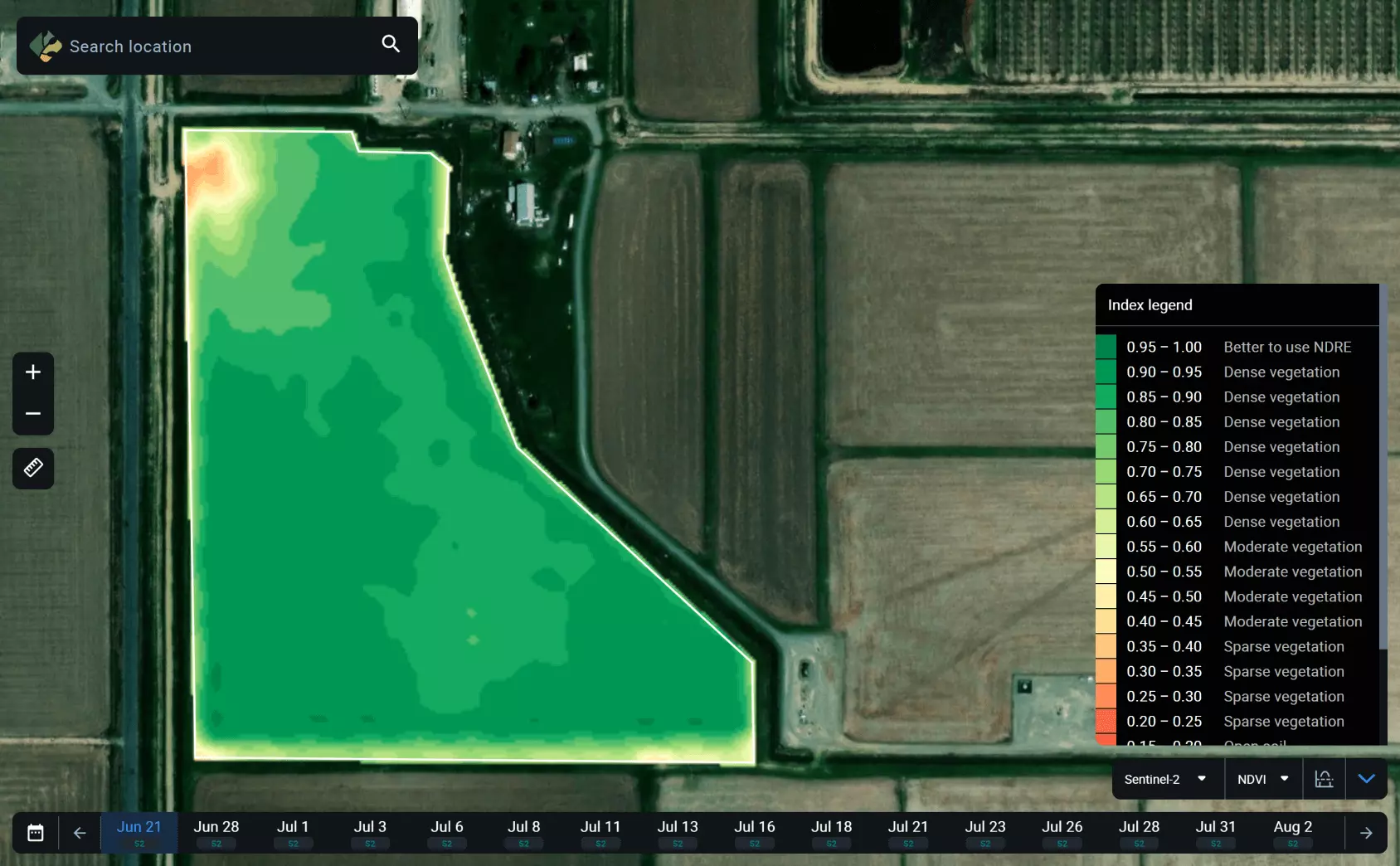
Nutrient Requirements To Grow Barley
The crop needs different amounts of nutrients not only depending on the cultivation purpose but on the sowing time.
Growing spring barley requires phosphorous (P) feeding at early stages for root system development, as well as for grain formation and ripening later. Potassium (K) makes the plants less vulnerable to diseases and pests and reduces the probability of lodging. Because these plants are known to accumulate nitrogen (N), nitrogen applications are not recommended at later development stages.
Growing barley in the winter, farmers are supposed to provide abundant fertilization due to the weak root system of the crop. Apart from N-P-K fertilization, the crop should also be supported with calcium (Ca), magnesium ( Mg), sulfur (S), boron (B), copper (Cu), iron (Fe), manganese (Mn), molybdenum (Mo) and zinc (Zn).
Pest And Disease Control In Barley Farming
The plants typically suffer from aphids, armyworms, wireworms, mealybugs, and stinkbugs. These insects damage the plants’ heads, stems, and leaves.
The stands are also attacked by pathogen bacteria, viruses, and fungi. The most notorious crop diseases in barley growing are bacterial leaf blights, Fusarium head blights, stripes, net blotch, yellow dwarf, downy and powder mildew, eyespot (foot rots), and root rots, among others .
Pests and diseases pose a serious threat to crop yields but the Disease Risk add-on on EOSDA Crop Monitoring can timely report the possible danger. Being aware of the potential damage to crops, farmers can grasp the situation and treat the field on time to prevent and mitigate the losses.
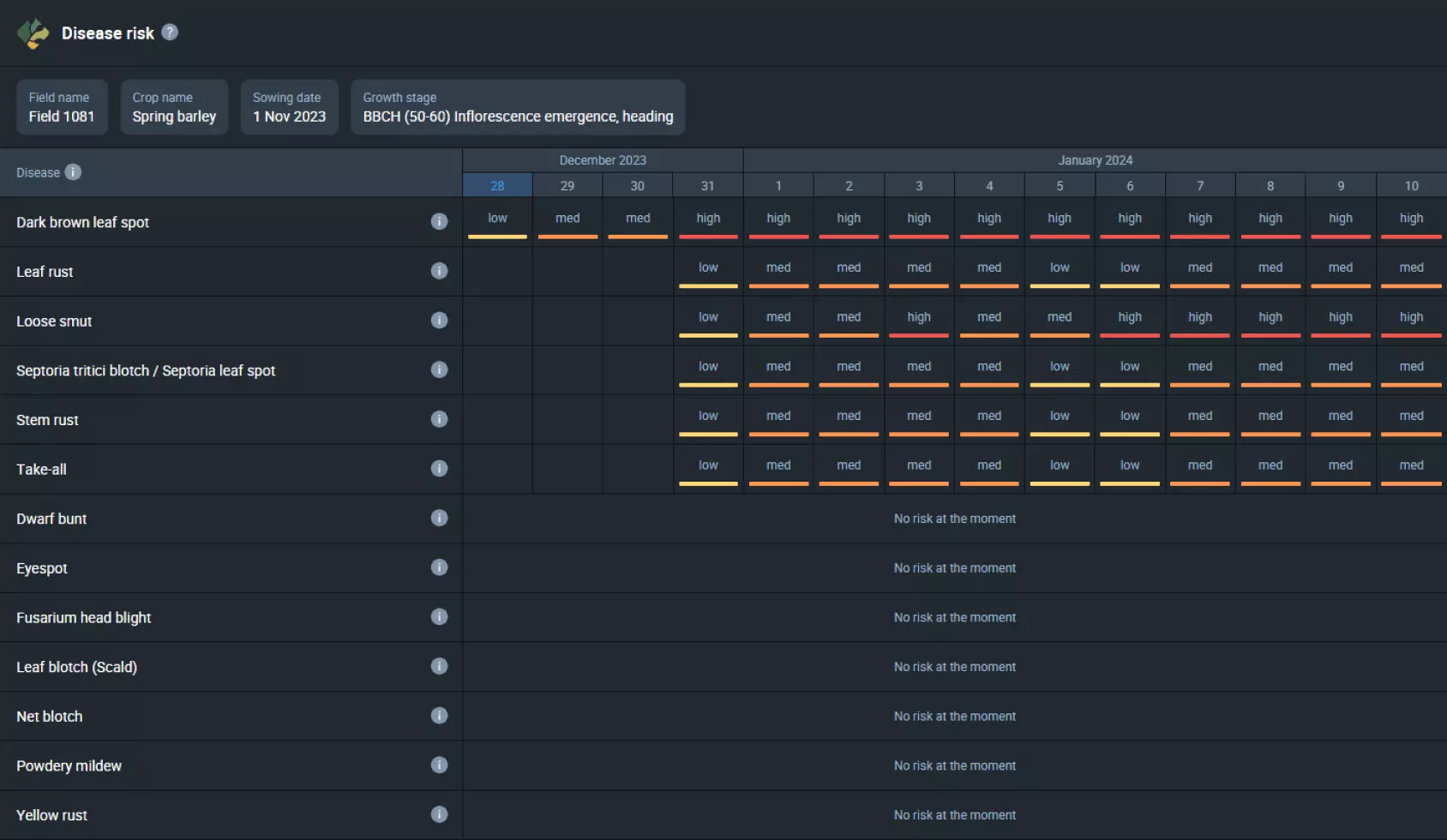
How Long Barley Grows
The crop type (winter or spring) determines how long it would take the plants to grow. The number of growing days for barley planted in spring is 60 to 70, and the duration of the crop development stages from canopy formation and expansion to grain filling is 6 to 8 weeks. Some cultivars require up to 120 to ripen, yet these plants mature faster than wheat.
When it comes to winter varieties, the barley growing time is around 60 days after it continues developing in spring. To establish and form 4-6 tillers before winter, the plants will need around 50-55 days. In this case, they will be able to adapt to the winter.

When And How To Harvest Barley
The crop’s harvesting time depends on the grain moisture content and the weather in the field. If the seed moisture content is adequate, the barley harvest season can start, provided there are no rains.
The crop is considered ripened with the grain moisture content varying from 12.5% to 18%. If the grain moisture content is lower, the seeds are likely to lose their coating. Particular storing conditions will be required if the grains are too wet.
The yields are typically harvested with combines and threshers. Barley harvest should be handled with particular care if it is supposed to be used for malt due to higher standards.
The NDRE index is suitable for tracking the crop state at the late growth stages. These index maps on EOSDA Crop Monitoring could help you with deciding on the best barley harvest dates. Besides, you will be able to control the harvest progress with our Remote Harvest Dynamics Monitoring.
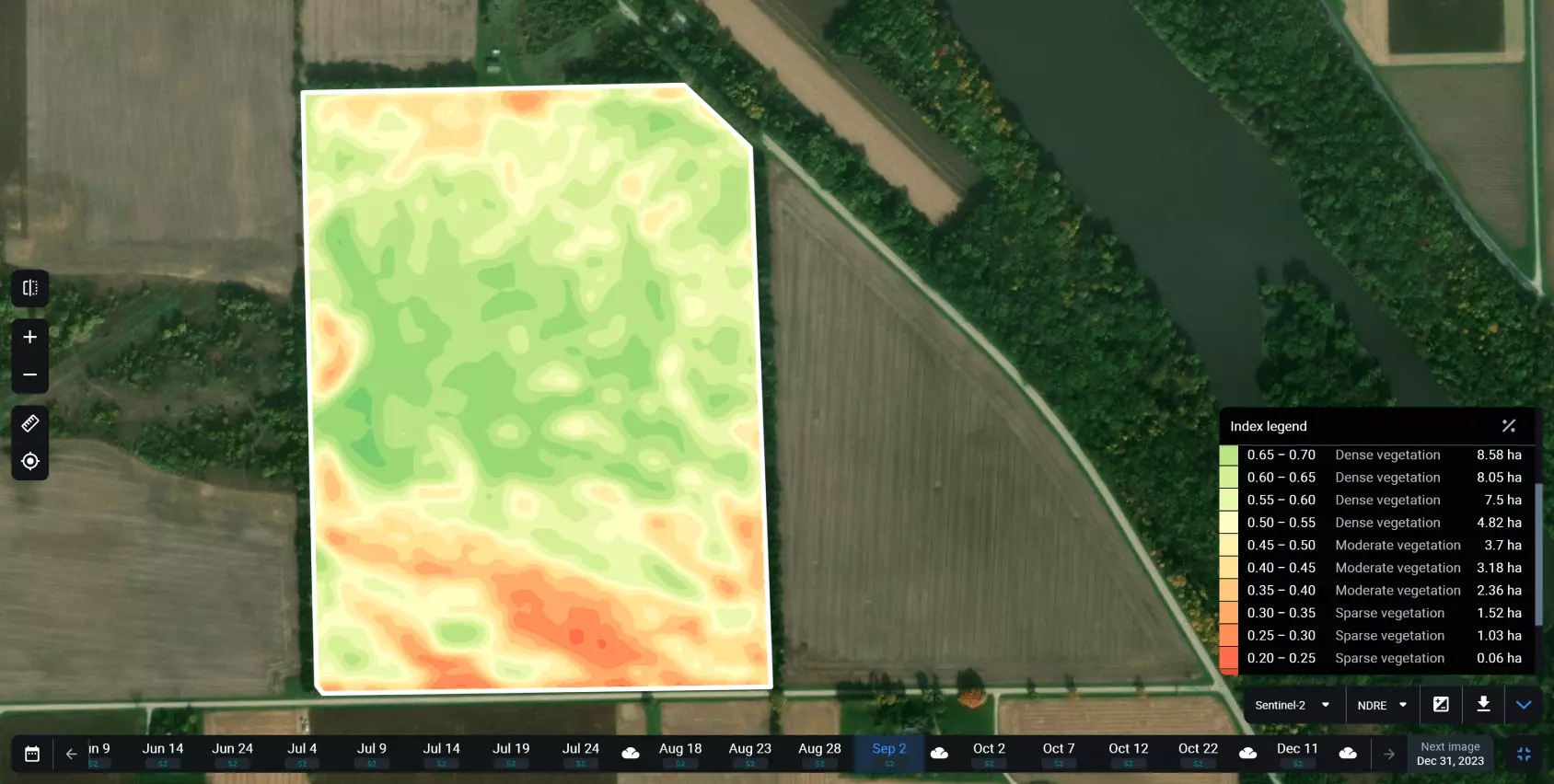
Grain Storing
After separating from the chaff, the grains can be stored in cool and dry places for 6-8 months. In freezers, the yield will live longer (one year and more).
However, the storage requirements depend on the grain moisture content and the purpose of growing. For example, harvesting barley for brewing with a grain moisture content of 10.5% and less will allow for its 18-month storage at 50°F – 68°F (10°C – 20°C). The storage life for malt grains with higher moisture content (12.5% and above) is just less than 3 months at the temperature of 68 – 86°F (20°C – 30°C).
Thus, growing barley can be a profitable business. By providing a suitable growing environment and managing your fields with advanced agricultural technologies, you will be able to boost your ROI at minimal costs.
About the author:
Vasyl Cherlinka is a Doctor of Biosciences specializing in pedology (soil science), with 30 years of experience in the field. He attended the engineering college in Ukraine and received his degree in agrochemistry, agronomy and soil science in the Chernivtsi National University. Since 2018, Dr. Cherlinka has been advising EOSDA on problems in soil science, agronomy, and agrochemistry.
Recent articles

Analyze 2025 & Plan Your Best Year Yet: LandViewer Christmas Offer
It’s the most wonderful time of the year! The Christmas holidays are here, and so is your chance to analyze 2025 and plan a prosperous 2026 with more affordable Pro plans in LandViewer.

EOSDA Models Climate Change Impact On Sugarcane Yields
EOSDA modeled future temperature, rainfall, and other climate impacts on Veracruz sugarcane. The results help growers plan long-term adaptation strategies, including timing, varieties, and irrigation.

EOSDA LandViewer Black Friday Sale: Exclusive Offers & Giveaway
This Black Friday, LandViewer offers new users the chance to save on monthly plans, get extra months with yearly subscriptions, and participate in a free annual plan giveaway.